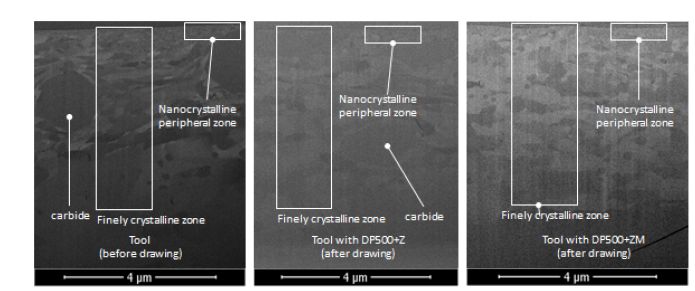Fundamentals of lubricated friction in deep drawing of zinc coated sheet metal considering contacting surface structure and morphology
Manitra Rakotomahefa, Prof. Dr. Matthias Scherge
This Doctoral Thesis resulted from a collaboration with thyssenkrupp and was successfully defended on Thursday, Jan 30, 2020.
The work is dedicated to tribological system in deep drawing, more precisely to zinc coated sheet metal steel and tool steel with liquid lubricant at room temperature. In particular, the main focus is the connection between frictional and wear behaviors of the tribosystem and the composition and topology of the contacting surfaces. This is based on the general hypothesis that is friction and wear are the results of adhesion and ploughing. The investigation follows a modular experimental framework combining tribological experiments, surface analyses and mechanical testing. As an onset, the first part consists of a large overview of the main approaches for the characterization of friction and wear, the theory of friction mechanics as well as the existing friction modeling approaches, and characterization of wear including concept of third body. This is followed by the description of the applied methodology and materials for the investigation. The next parts present the results of the experiments which constitutes the main part of the work. In the first instance, the influence of surface topology on friction is considered. While topography of the surface of the used tool depends mostly on the type and quality of the finishing process, that of sheet metal surface depends considerably on skin-pass rolling. The outcome of the investigation allowed to identify important characteristics of the surfaces that play an important role in the frictional behavior of the corresponding tribosystem. To do so, sheet metal from coil that was subject to different skin-pass levels as well as tools with different surface finish were tested in strip drawing and pin-on-disk tests. In the second instance, the role of sheet metal surface structure in friction and wear constitutes another major part of the work. Related to that, comparison of two different types of zinc coating enabled to see that a small change in the chemical composition of the zinc coating can bring about substantial difference of friction and wear behavior of the corresponding tribosystem. This also allows to understand more the main mechanics that govern friction in deep drawing. For the study, pure zinc coating and zinc-magnesium coating are employed. Strip drawing and pin-on-disk tests are extensively performed along with surface analysis, topography measurement and mechanical testing.
 MikroTribologie Centrum μTC
MikroTribologie Centrum μTC